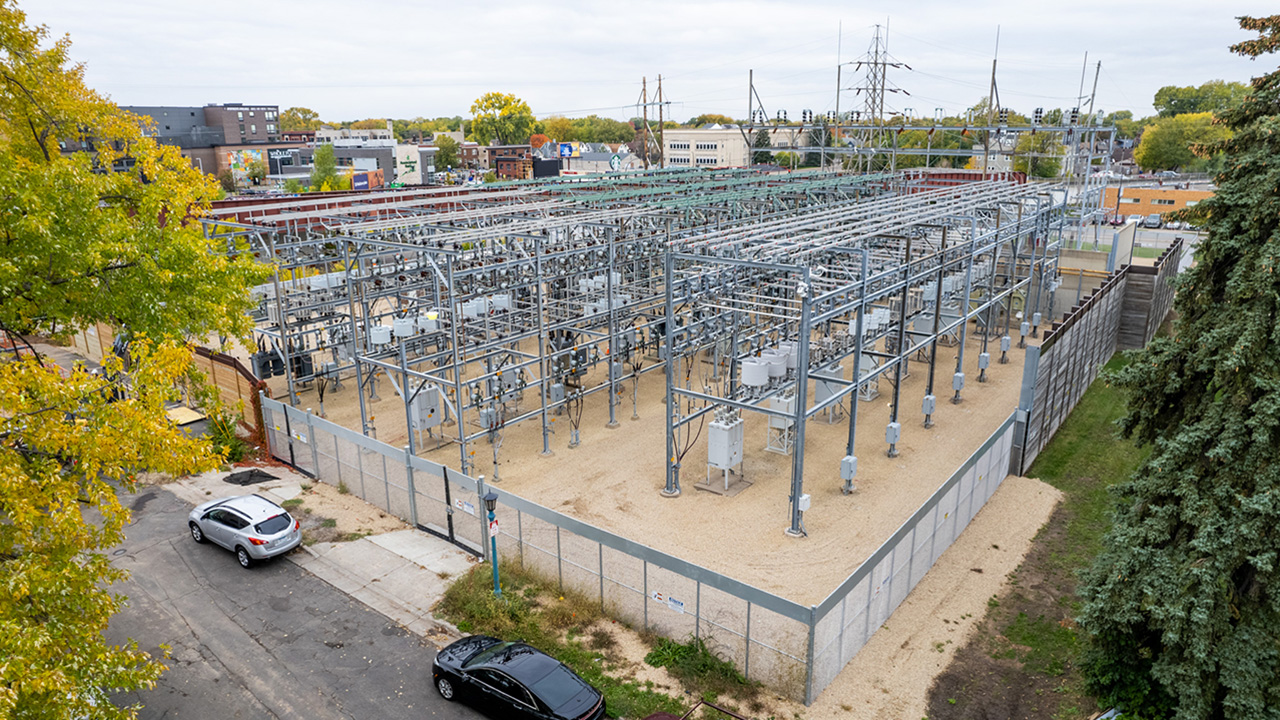
Fresh Energy continues to advocate for the modernization of our electric distribution system, increasing the efficiency with which we use existing infrastructure, and making smart investments in new practices and technology that best serve Minnesotans. One way we further this advocacy is through our work in Xcel Energy’s (Xcel) Integrated Distribution Plan (IDP) docket at the Minnesota Public Utilities Commission (PUC, or Commission). (Want a refresher on IDPs? Check out this blog to learn more about distribution planning.) Fresh Energy has been deeply involved in the IDP process since 2017 to help craft plans that speed the transition to a carbon-free future.
As a refresher, the distribution system is the network of lower voltage lines that carry electricity through our neighborhoods and down to our homes. The distribution system is aging and, at the same time, under greater demand as more consumers electrify their appliances, outdoor equipment, and vehicles. Investments often seen in an electric utility’s IDP can range from the replacement of deteriorating utility poles to software that’s used to operate the grid more efficiently, to pilot projects for community-based resilience. The main goal of an electric utility’s IDP is to best inform the Commission, stakeholders, and the public of a utility’s plan to invest in its distribution system to meet the policy goals of the state (such as Minnesota’s 100% clean electricity law) while maintaining the safety, reliability and affordability of the system. Fresh Energy commented and appeared at the Commission’s recent hearing on Xcel Energy’s IDP to advocate for several solutions that work toward that goal.
Transparency, efficiency and opportunities in Xcel’s IDP
On November 1, 2023, Xcel Energy filed its 2023 IDP with the Commission. Fresh Energy filed multiple sets of comments in the resulting comment periods in support of grid modernization on several fronts. Ultimately, at a July 2, 2024 hearing, many of Fresh Energy’s positions were advanced by Commission decisions.
Fresh Energy’s main recommendations to Xcel’s IDP were for greater budget scrutiny, improvements to grid efficiency, proactive upgrades and cost allocation, and to value solar more highly:
Greater budget scrutiny: Fresh Energy proposed greater stakeholder engagement toward developing a cost-benefit analysis, or similar analysis, for investments that are deemed discretionary by Xcel (think: poles replaced for age- or condition-related reasons). This stakeholder process and ultimate analysis will provide greater detail into the Xcel’s spending on a program-level basis as well as to help define what is indeed “discretionary.”
Improve grid efficiency: Fresh Energy requested Xcel re-evaluate Integrated Volt-Var Optimization (IVVO), which Xcel originally found was not in the public interest for its Minnesota territory (Xcel’s Colorado territory does utilize IVVO). Fresh Energy requested Xcel to update the assumptions it made in assessing the technology as well as to re-evaluate the cost effectiveness of IVVO. This evaluation will also include the identification of where IVVO could be deployed most cost-effectively on Xcel’s system and a potential plan to target those areas for deployment.
Proactive upgrades and cost allocation: Fresh Energy supported a stakeholder process designed to create a framework to address the cost allocation of proactive grid upgrades (think: instead of replacing a transformer in-kind, proactively installing a larger transformer that could handle forecasted future EV charging load). The framework will seek to address, among other topics:
- How to allocate the costs of proactive upgrades;
- How a proactive upgrade program would integrate with a utility’s planned distribution investment programs;
- How to determine where and when there is a need for proactive upgrades using forecasted DER and load adoption;
- How to ensure any proactive upgrades are distributed in an equitable manner throughout a utility’s service territory.
Value solar more reasonably: Xcel describes Planned Net Load (PNL) as the calculated load assuming a certain percentage of solar PV generation is dependable to lower a feeder’s demand. To calculate PNL, Xcel applied a Dependability Factor which considers hourly demand and hourly solar generation. The goal is to reflect the dependable, load-reducing impact of solar in Xcel’s distribution system planning.
The problem? The dependability factor Xcel applied was far too conservative, resulting in the load-reduction capability of solar to be far undervalued at the time of a feeder’s peak load. Undervaluing this capability could result in increased distribution spending and an increase in costs to consumers. Fresh Energy supported a stakeholder process to refine Xcel’s PNL Methodology and Dependability Factor ahead of the next IDP.
What’s next?
Overall, Fresh Energy is excited about the outcome in this docket and the various stakeholder processes that came from it. Fresh Energy plans to be continually involved in the outcomes of this docket.
In six months following the Commission’s order in this proceeding, Xcel Energy is required to report on its revaluation of IVVO. Fresh Energy plans to review and participate in any next steps that result from this report. Fresh Energy will also be involved in the year-long stakeholder process surrounding proactive upgrades and cost allocation. At the conclusion of the stakeholder process, slated to be July of 2025, the group will propose a framework with which to evaluate future proactive investments by Xcel. Finally, Fresh Energy also plans to be involved in the stakeholder processes for both the refinement of Xcel’s planned net loading methodology and the development of program-level cost benefit analyses (or a similar analysis) for discretionary investments.
Once all of that work is “done” we’ll be back to evaluate the next Xcel Energy IDP to be filed November 1, 2025, with an anticipated decision on that case falling somewhere between May and July of 2026.
